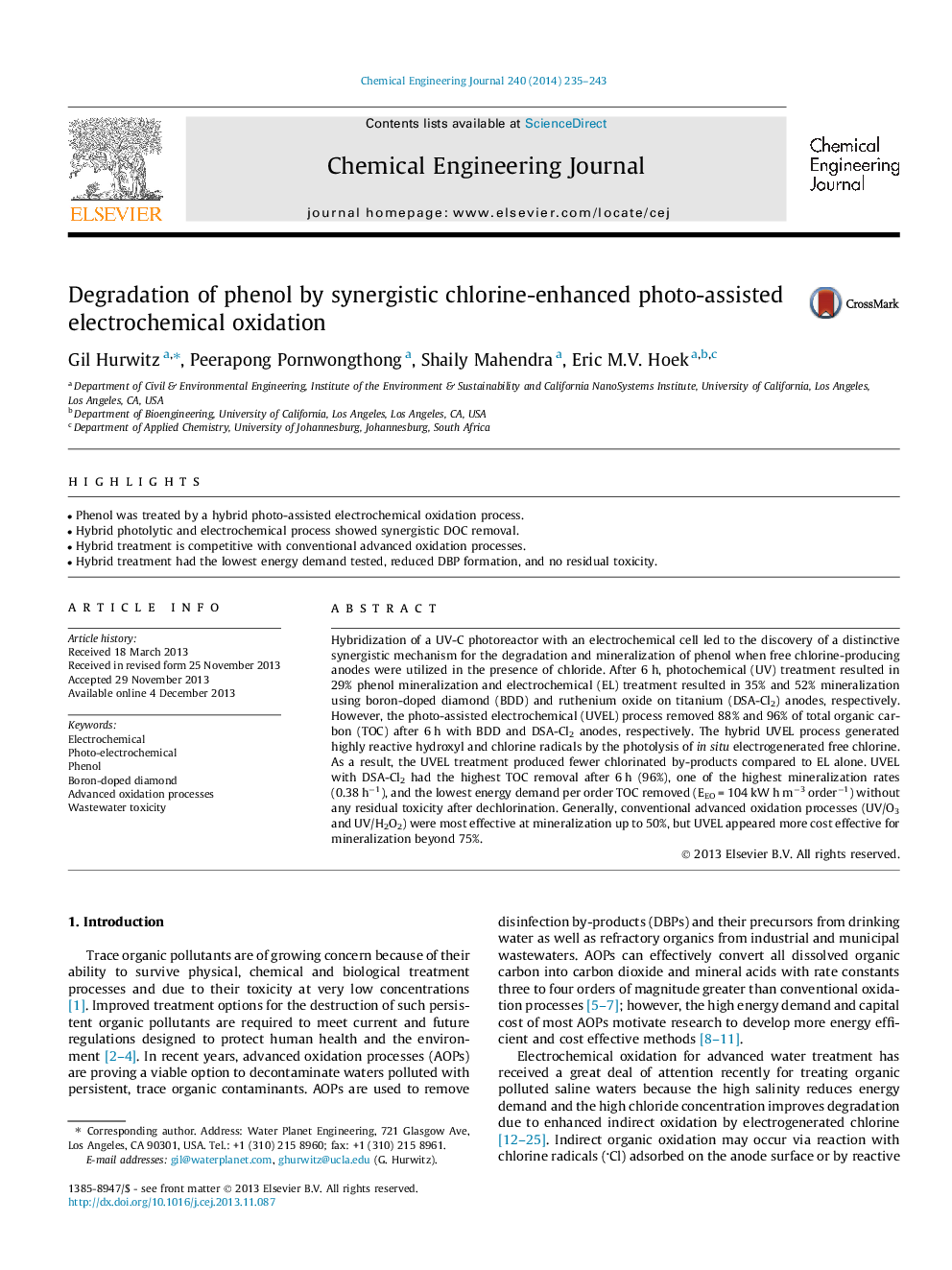| کد مقاله | کد نشریه | سال انتشار | مقاله انگلیسی | نسخه تمام متن |
|---|---|---|---|---|
| 147682 | 456398 | 2014 | 9 صفحه PDF | دانلود رایگان |
• Phenol was treated by a hybrid photo-assisted electrochemical oxidation process.
• Hybrid photolytic and electrochemical process showed synergistic DOC removal.
• Hybrid treatment is competitive with conventional advanced oxidation processes.
• Hybrid treatment had the lowest energy demand tested, reduced DBP formation, and no residual toxicity.
Hybridization of a UV-C photoreactor with an electrochemical cell led to the discovery of a distinctive synergistic mechanism for the degradation and mineralization of phenol when free chlorine-producing anodes were utilized in the presence of chloride. After 6 h, photochemical (UV) treatment resulted in 29% phenol mineralization and electrochemical (EL) treatment resulted in 35% and 52% mineralization using boron-doped diamond (BDD) and ruthenium oxide on titanium (DSA-Cl2) anodes, respectively. However, the photo-assisted electrochemical (UVEL) process removed 88% and 96% of total organic carbon (TOC) after 6 h with BDD and DSA-Cl2 anodes, respectively. The hybrid UVEL process generated highly reactive hydroxyl and chlorine radicals by the photolysis of in situ electrogenerated free chlorine. As a result, the UVEL treatment produced fewer chlorinated by-products compared to EL alone. UVEL with DSA-Cl2 had the highest TOC removal after 6 h (96%), one of the highest mineralization rates (0.38 h−1), and the lowest energy demand per order TOC removed (EEO = 104 kW h m−3 order−1) without any residual toxicity after dechlorination. Generally, conventional advanced oxidation processes (UV/O3 and UV/H2O2) were most effective at mineralization up to 50%, but UVEL appeared more cost effective for mineralization beyond 75%.
Journal: Chemical Engineering Journal - Volume 240, 15 March 2014, Pages 235–243
